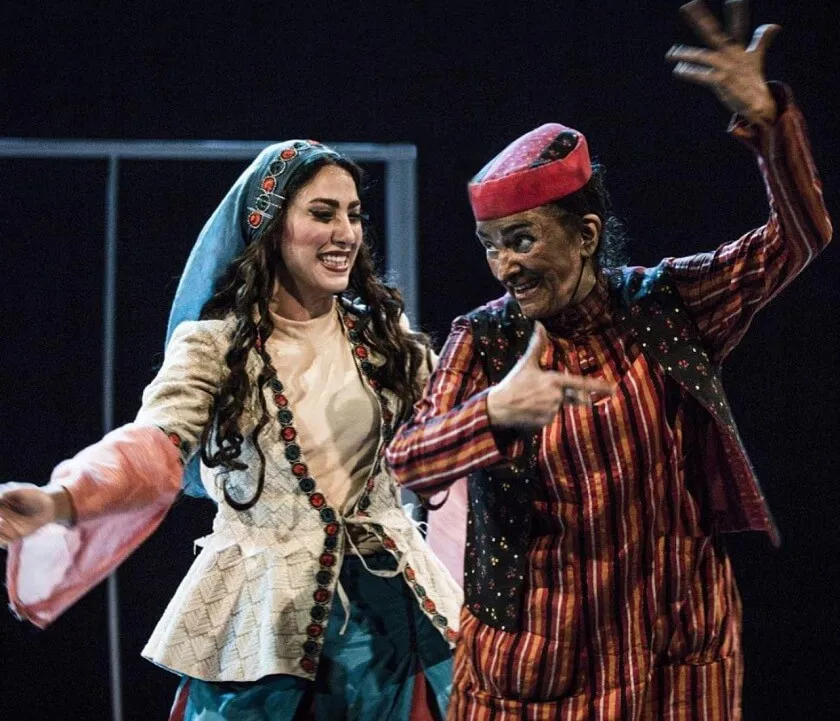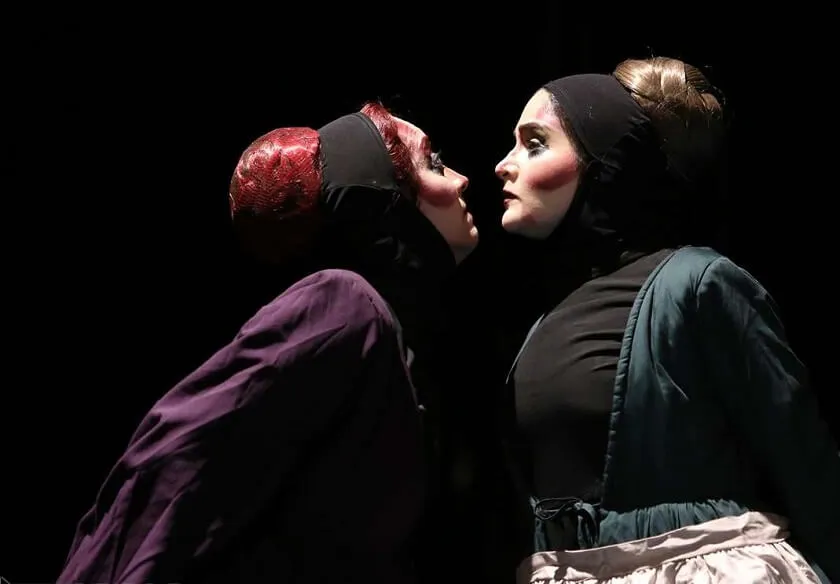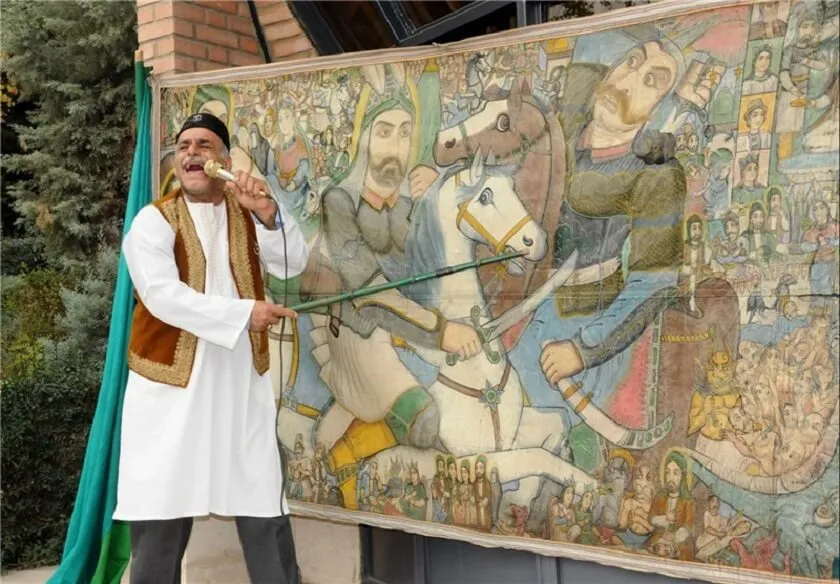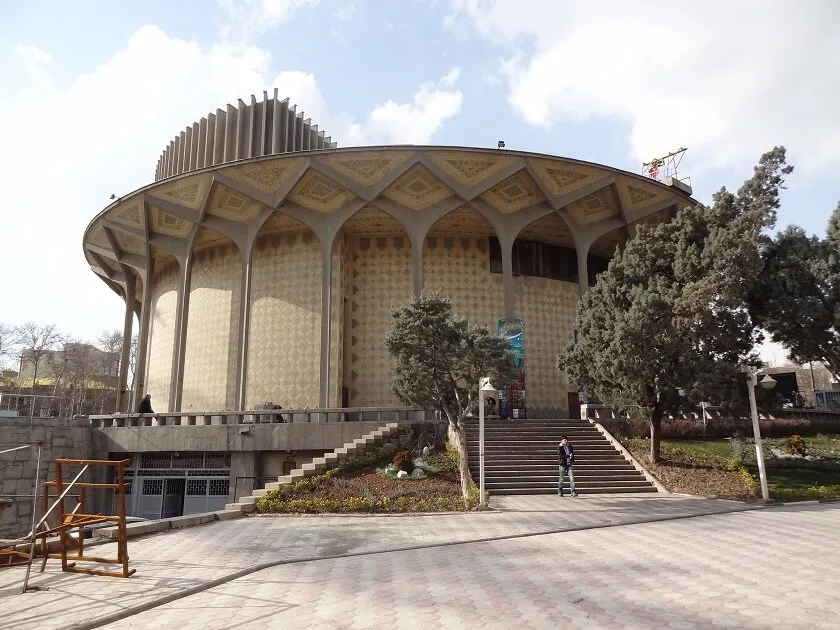Theater in Iran
The theater is considered by many to be the most complete of fine arts. Because theater is not only independent, but also it encompasses all other skills such as literature, music, visual arts, and so on. On the other hand, the play is linked to human life. What the theater needs is just a space to reflect the human feelings and beliefs in that space.

Theater in Iran means looking at life with a different view
The theater is a media that can transfer people’s words to others. The distinct benefit of theater is that the audience buys “unique opportunities and experiences.” Experimenting difficult and complicated human experiences and essential issues without giving the person (the viewer) any harm. The audience in the theater lab sees their everyday experiences and problems on stage, without having to deal with them directly and literally. Actors, rather than spectators, examine the whole process of these issues. Actors betray and pay for it, oppress and protest, desperate, and seek for the unknown and achieve unfulfilled dreams instead of the spectators. This is how the viewer buys cheap experiences that, in real life, should give them a high, irreparable price!
The pleasures and emotions underlying the audiovisual attractions that occur in the presence of the audience in the theater are not similar to those in other cultural products. Just going to a music concert is like being in a theater. But music concerts will lack the visual attractions and symbols of theater. Theater, like bread, toothpaste, and shoes, has certain definite benefits. The benefits that each person has to continually and consistently enjoy them.
The presence of women in Iranian theater

Many years ago, the art of theater in Iran was purely masculine. Because not only women could not appear on stage perform their roles, they were not even allowed to appear in the theater and watch it.
According to historical reports, the first Iranian female actress to be named after Sasanians was Azadeh Rumi, who was known as Bahram Goor’s singer. She made music and was killed by blaming Bahram Goor for the brutal killing of animals.
The first Iranian theater established in 1924. However, during the first session of the National Assembly, a few women expressed their interest in theater art as a purposeful social practice.
In 1926, Alinaghi Vaziri founded the Conservatory of Music. At the conservatory, theaters and signs were displayed along with the music. In that year, Amir Saadat launched the Saadat Theater with the first Iranian women. Three women named Sharmani Gul, Pari Galobandaki, and Molok Molavi were the first female actress to appear in the theater and fought against the blind and irrational prejudice of that time.
Different types of theater in Iran
Naghali (Narrating): Storytelling and listening to sweet and informative tales have been one of the oldest recreations and a common way of transferring the experiences and knowledge of ancestors to younger generations. In those days, just as children loved to hear great stories of grandparents, the adults also had a similar and more entertaining amusement, and that was sitting for a talking session. The most appealing thing about the narrating was that the narrators exaggerated the story with a particular way of saying, relying on the words, the motions, and, to a certain extent, they enlarged the role of the heroes. By relying on words, they narrated the story in a way that made the listener think of the protagonist as one. The narrator told epic tales of Iranian heroism. But the sad thing is that this old style of storytelling, spreading bravery and purity and teaching people how to deal with life’s challenging events, is now in the limbo of forgetness and giving its place to television.

Siah Bazi or Ruhozi: In fact, the original Iranian theater was born with Siah Bazi or Ruhozi. The attitude of the actors and directors of Ruhozi is impressive. The characters are either too bad or too good. In this kind of play, most of the time, the actors are also directors, and they create the play in conversation and movement.
Ruhozi or Siah Bazi is a comedy and funny Iranian play. It is usually performed without any text at weddings and circumcision ceremonies. The stories were taken from people’s lives, and the main character of the play, (Siah) Black, represented the black servant who worked at the home of most of the wealthy during the Qajar era. The black who was brought to Iran from African countries formed a large population, living alongside wealthy families and serving for generations. Although the behavior of their masters was not with harshness, this black group was considered to be from the lower classes of society. The language of the play was like the language of the street folk and market, and the stories were simple and sometimes repetitive, but the improvisation and fluency made the audience laugh.
In the old houses, the beds were usually placed on the water pond in the middle of the summer resting season. And in cold weather, they were covered with boards to prevent freezing and cracking. The performances were usually performed on these beds. People sat around the pond, watching the play. As the lives of the people changed, these plays gave their place to theaters, and with the downfall of the play in the years following the Islamic revolution, it was slowly forgotten.
City Theater of Tehran

After the revolution and with the closure of nightclubs and theaters and cinemas of Lalezar, this street, which was once a cultural, artistic, and recreational center of Iran, became a commercial center. With the onset of the war and the lack of constructing new centers such as the City Theater Complex and the new managerial approach, the City Theater became the showcase and theater center of Iran. The competition between the directors grew. Even the Vahdat Hall could not diminish the importance of city theater.
The heart of Tehran’s theater is located in Daneshjoo Park and the City Theater Building, a place where artists value so much. Undoubtedly, this old building with its own architecture is one of the main symbols of Valiasr. Apart from the pleasure of seeing a play in this place, sitting on the edge of the pond facing this building and gazing at its fascinating architecture is a real thing. Recently in the southeast part of Daneshjoo Park and along Razi Street, Tehran’s Independent Theater Complex has become a new hangout for artists and entertainers alike with the cafes surrounding it.